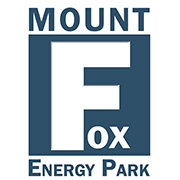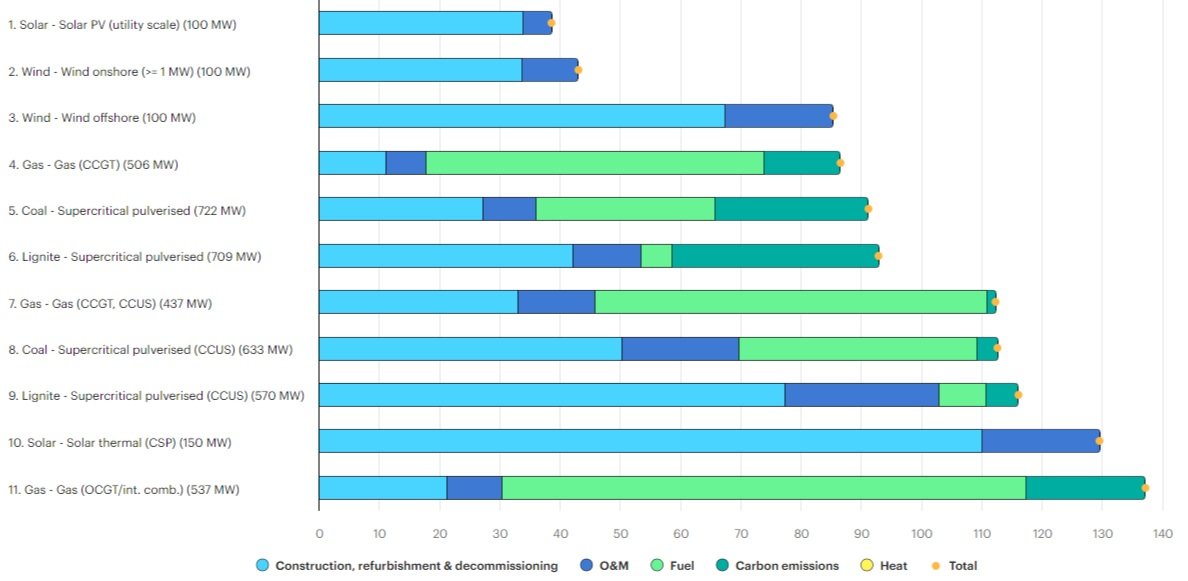
Mt Fox Energy Park Fact Sheet
Why do we want to build a wind farm?
Simply put, strategically and intelligently developed renewable energy is the most cost effective and practical method of replacing retiring coal-fired power stations. Extending the life of old, inefficient power stations is extremely expensive , and building new ones is by far the most expensive way to replace the lost power generation. Conversely, the costs for building renewable energy installations are falling. Replacing coal-fired power stations with renewable energy is not only the most environmentally responsible option but also the most economical.
The Australian Energy Market Operator (AEMO) and a recent CSIRO study have demonstrated the need for wind energy in Queensland to secure the National Energy Market’s three-year, 50% decarbonisation objective, and net zero emissions by 2050.
Why did we choose the site at Mt Fox?
The Resource: The extensive resource studies undertaken over the past 4 years show wind at the site is abundant and reliable, usually picking up in the afternoon and evening. This means power can be generated when there is low or no wind generation elsewhere, and when other forms of renewable energy, like solar, are coming off the grid.
The Grid: Due in part to the abundance of solar in Queensland, the grid is quite vulnerable, with an oversupply of daytime energy and undersupply at night. Though the construction of the BESS (Battery Energy Storage System) and use of nocturnal wind, MFEP will shore up the North Queensland grid, creating reliable and dispatchable energy when it is needed most.
Also, two power transmission lines intersect right on the property; This location eliminates the need to install a large transmission line reducing the total disturbance footprint for the project.
The Local Area: The site is very remote, located in an area where relatively few residents will be impacted by the wind farm. There are no residences within 1.5 km of a wind turbine, so loss of visual amenity and noise impacts will be minimal. We acknowledge there will impacts to some residents near to the energy park and along the transport route. We are committed to continuing dialogue with those impacted to minimise any disruption or loss of amenity.
What is the site like now?
Entirely outside of the sensitive Wet Tropics area, the cattle grazing property is largely comprised of unimproved pasture and logging regrowth.
Due to the selective foraging nature of cattle, the more unpalatable weeds, particularly Lantana have come to dominate the understory at the expense of native grasses and plants. A weed and pest management plan will be implemented to not only increase feed availability for cattle, but also to restore the land’s suitability to tenant native wildlife and increase habitat for native species as a result of the development.
A portion of the site has been found to be suitable for habitation of several endemic species, and that land (~800 Ha) has been protected and will be rehabilitated with the goal to encourage more native species to the area. This process will result improved habitat quality and connectivity both onsite, and with contiguous habitats (both current and potential) in neighbouring areas.
How are we protecting the environment?
We understand the importance of protecting the Mount Fox landscape and ecosystems. The project has undergone environmental assessment and has detailed management plans in place for flora, fauna, water, fire safety, erosion control, and more.
For those interested, full details including our environmental management plans are available to view in full at http://epbcnotices.environment.gov.au/referralslist/ Search for Mt Fox or 2021/8910
Will the project endanger koalas?
No, extensive searches including the use of camera traps and trained sniffer dogs over four years have found no koalas residing or feeding on the site of the project. We are taking steps to protect land which may be suitable for koalas, and implement management plans that will help protect any that may migrate into the area.
How will the project effect the Economy?
MFEP has undertaken an economic assessment as part of the planning process. Immediate opportunities exist within the local, regional and state communities surrounding the site including:
an estimated 25% growth in GRP during the construction phase of the project,
an estimated $30.5M contribution to the local, regional, and state GRP/GSP over the project lifespan,
an estimated 200 jobs during construction,
an estimated 10-15 permanent jobs during operations,
an estimated 40-100 FTE jobs created in the State.
How many turbines will there be on site, and what is the disturbance area?
We have yet to finalise the project layout, but preliminary models estimate ~47 turbines on a temporary disturbance footprint of up to 242 Hectares, including access roads and BESS installation. Much of this clearing will be rehabilitated post construction.
What size is the battery, and what is the disturbance area?
The BESS is 300MW/ 600MW/h. Total footprint and clearing area required for the battery is 6.92 ha.
How does the battery compare in size to others in Australia?
At 300MW, the Mt Fox battery is a mid-sized energy storage facility. Following is a sample of just some of the current batteries and battery projects larger than MFEP. For a complete list, follow the link. Big Battery Storage Map of Australia
Sun Cable- 22 000 MW
Goyder South - 900 MW
Waratah Super Battery 850 MW
Eraring -700MW
Melbourne Renewable Energy Hub- 600 MW
Golden Plains – 600 MW
Mount Piper -500 MW
Wallerwang -500 MW
Tomago -500MW
Great Western- 500MW
Wurdong – 400 MW
Does the battery pose a fire hazard?
While battery fires can happen, new technologies and effective management plans make them exceedingly rare. Tesla has over 10 GW (10 000 MW) of storage and a strong safety record. Further, the company is continually improving the safety features and capabilities of its battery installations based on data from operational experience. For more information on the technology behind the batteries, download the Megapack Safety overview here.
Across Tesla’s entire Megapack fleet the failure rate is at 0.001% (one in a million). This has been published in Tesla's latest Impact Report.
Effective pre-incident planning is also undertaken prior to construction and operations, MFEP shall consult with the local fire department to develop suitable Emergency Response Plans. These plans will provide information on the technical characteristics of the project and recommended firefighting strategies for each stage of the project, such that in the unlikely event of a fire the department shall be fully briefed on recommended strategies to manage associated risks.
Since the Victorian Big Battery (VBB) and Bouldercombe fires, what steps have Tesla taken to reduce fire risk?
Tesla have implemented procedural, firmware and hardware changes as a result of both incidents. Most notably though, the battery cell chemistry changed after VBB and the updated configuration demonstrates significantly different properties and propensity to fire when compared to other chemistries.
Tesla Megapacks now utilise Lithium Iron Phosphate (LFP) as the cathode material. LFP offers enhanced safety compared to other lithium-ion technologies. One key safety feature is its stable thermal and chemical properties. LFP batteries exhibit high resilience during oxygen loss, a situation that can lead to exothermic reactions in other lithium cells. This resilience makes the cells less prone to ignition in case of mishandling, especially during the charging process. Additionally, LFP batteries do not decompose at high temperatures, further contributing to their safety.
More of the changes made after VBB may be read in the report
Are toxic gases released into the air if there is a fire?
With the new battery technology, fires are an extremely unlikely occurrence, and if they occur, are unlikely to spread. However testing shows that gasses from a Megapack fire are similar to those of a typical structure fire.
Only trace amounts of acid gasses are released during a fire. These gasses, such as hydrogen fluoride, come from burning plastics, not battery cells. The concentrations are small enough that they are quickly diluted upon contact with the air, meaning there is no negative impact to air quality in the surrounding area. Refer also to the VBB report above for EPA conclusions.
Will contaminants from the batteries leak into ground water, run off to local waterways or impact the Great Barrier reef?
Any fluid leaks are retained internally within the Megapack units. In the unlikely event of a fire, water is not used as means to extinguish the fire, further reducing any run-off risk.
Will MFEP affect local property values?
Potential impacts upon the property sector are expected to be significantly positive in the Local Area. This is due to the combination of:
(a) Constructing and operating an on-site workers’ camp during the construction period to accommodate those staff wishing to work on a DIDO basis, although local skilled workers would be encouraged to be engaged;
(b) The relatively low numbers of operational staff;
(c) The high number of vacant dwellings in the Local Area being more than sufficient to accommodate all operational staff (although some may not choose this option); and
(d) The very low average and median prices for dwellings in the Local Area, indicating that any interest by operational staff in living in the Local Area, would improve the market (and prices) without over-heating the Local Area’s market (avoiding negative economic impacts).
Who owns Mt Fox Energy Park?
MFEP is a joint venture between Tasmanian company Zephyr Energy Developments, and local landowners Brett and Eric Lollo. Together, the partners form Mt Fox Energy Park Pty, Ltd.
In 2022 an Option to Purchase agreement was reached with TAG Energy. Ownership of MFEP will pass to them formally prior to the onset of construction works, but TAG is already influential in the design and timing of the project, securing ARENA support and working with MFEP to obtain independent DA for the BESS.
The company has contracted the services of PROJECT.e-, a project developer specialising in renewable energy and carbon projects to manage the development of the wind farm.
More Questions?
If you have more questions about MFEP, please contact us using the form provided on the Contact Us page or email us directly at info@mtfoxenergypark.com.au.
If you’re curious about renewable energy in Australia, check out the following links.
https://reneweconomy.com.au/big-battery-storage-map-of-australia/
Australia's big batteries: What do they do and how do they make money? | RenewEconomy
https://arena.gov.au/renewable-energy/wind/
https://www.cleanenergycouncil.org.au/resources/technologies/wind
5 reasons why wind power is one of the healthiest forms of energy

